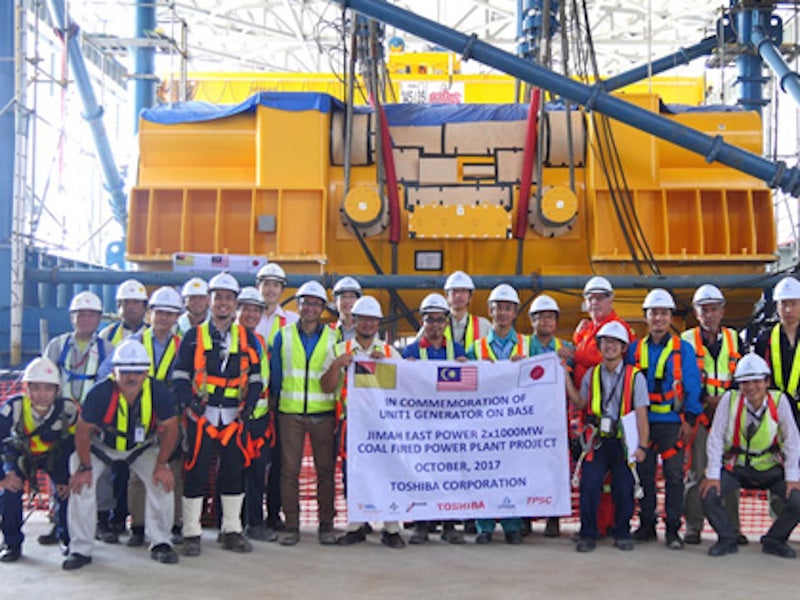The Jimah East power project, also known as the Tuanku Muhriz power station, is a 2GW ultra-super critical coal-fired power station located in Port Dickson, Negri Sembilan, Malaysia.
The two-unit thermal power plant is owned and operated by Jimah East Power (JEP), a joint venture of Tenga Nasional Berhed (TNB, 70%), Mitsui (15%) and Chugoku Electric Power (15%).
Financial closure on the £2.3bn ($3.7bn) project was reached in December 2015, while the main construction works were started in 2016.
The first unit of the Jimah East power plant commenced commercial operations in August 2019, while the second unit was brought online in December 2019.
Jimah East power project background
Surahanjaya Tenaga, the Energy Commission of Malaysia, awarded the 2GW thermal power project to a joint venture of 1Malaysia Development Berhad (1MDB) and Mitsui, through international competitive bidding in February 2014.
TNB acquired a 70% stake in JEP from 1MDB in July 2015, while Mitsui sold a 15 % stake in the project to Chugoku Electric Power in January 2016. Initial construction works for the project were started in 2015.
Location and site details
The Jimah East thermal power plant is developed on a 257acre-site in Mukim Jimah, Port Dickson, Negeri Sembilan in peninsular Malaysia, approximately 60km away from Kuala Lumpur.
Plant make-up
The Jimah East power station comprises two ultra-supercritical coal-fired units of 1,000MW capacity each.
Each unit is equipped with a once-through boiler, a 3000rpm compound tandem steam turbine designed to operate at 603° Celsius steam temperature and 270 bar steam pressure, and an enclosed, cylindrical steam turbine generator with a water-cooled stator and hydrogen-cooled rotor.
The power station has a 160m-high reinforced concrete chimney with 9.1m internal liner diametre for flue gas exhaust, as well as on-site fly ash or bottom ash storage facilities.
Each unit is also fitted with seawater flue gas desulphurisation system (FGD) and electrostatic precipitator (ESP) for emissions control.
Coal and water supply
The Tuanku Muhriz power station is estimated to require approximately six million tonnes (Mt) of coal a year which is mostly imported from Indonesia. The coal supply is received in ocean vessels at a coal jetty constructed near the plant site.
The raw water for the plant is sourced from Syarikat Air Negeri Sembilan, a government-owned company responsible for water supply services in Negeri Sembilan through a 20km pipeline, while the cooling water is sourced from the Malacca Strait.
Power evacuation
The power generated by the Jimah East power station is evacuated into the grid through a 46.65km-long 500kV double-circuit overhead transmission line connecting a substation at Olak Lempit.
Power purchase agreement
The electricity output of the plant is sold to Tenaga Nasional Berhad (TNB) under a 25-year power purchase agreement (PPA) signed in July 2014.
Contractors involved
A consortium of Toshiba Corporation, IHI Corporation, Hyundai Engineering Company, and Hyundai Engineering and Construction was awarded the engineering, procurement, and construction (EPC) contract for the Jimah East coal-fired power project in September 2014.
Toshiba was responsible for the marine civil work as well as for the supply and installation of steam turbines, generators, transformers, and switchgear for the project.
IHI Corporation was responsible for the supply and installation of boilers and auxiliaries, while Hyundai Engineering Company and Hyundai Engineering and Construction were responsible for the civil engineering and construction works for the project.
Jacob Engineering Group was subcontracted by Hyundai to provide engineering services for the balance of plant facilities and the cooling water intake and discharge system for the plant in August 2015.
Singapore-based HSL Construction was subcontracted for civil works of sea water intake and discharge system for the project.
GE Power Services (Malaysia) was contracted for the engineering and construction of the flue gas desulphurisation (FGD) units for the Jimah East power station.





